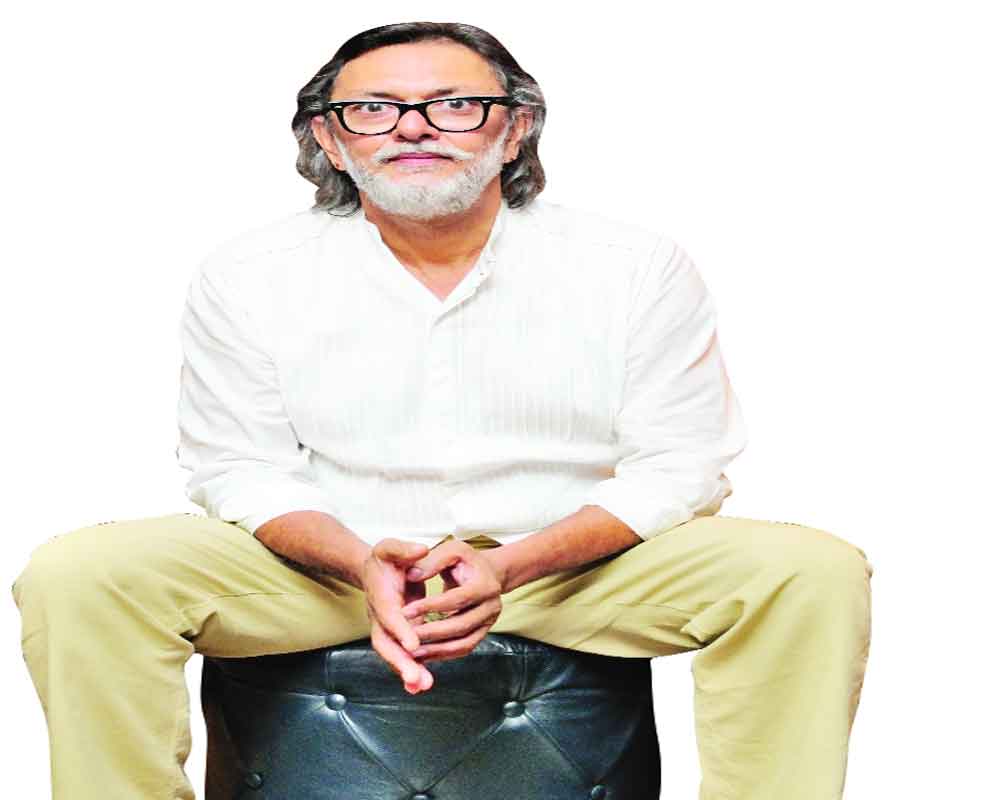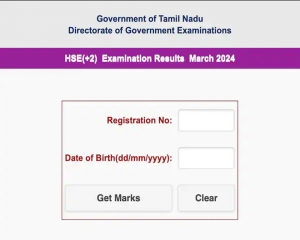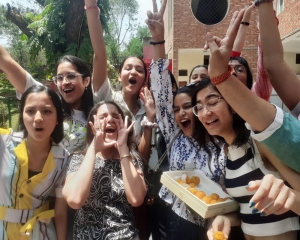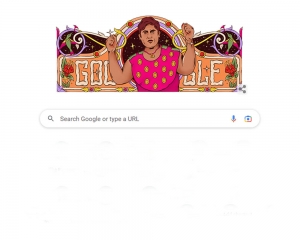From talking about his favourite stories to what it means to make films that matter, filmmaker Rakeysh Omprakash Mehra tells Chahak Mittal why it’s disheartening for him to see that the 12-year-old film, Rang De Basanti, hasn’t resulted in a real change
The one subject that filmmaker Rakeysh Omprakash Mehra likes the most to work upon is ‘people’ as they become easier to relate to in everyday life. And in the process, encourage others with a greater sense of purpose and meaning. And it’s the same drive that had led him to create films like Rang De Basanti, Delhi-6, Bhaag Milkha Bhaag and many more. Layers keep unravelling with every visit to his films, be it after long intervals as their subjects stay ever-relevant. But as Rang De Basanti marks its 12th anniversary, he feels, “Rather than a delight, it is very disheartening to see the film being relevant to the times and the audience even today. However, only a few parts of it and not in totality.”
But why? He says, “When you start thinking in terms of people and their context, it’s a cycle, which has been going on since forever. The world has been divided and ruled by religion since the beginning. There has been nothing new. So it’s a cycle, it keeps coming back in different ways.”
Among other things in history, the film takes one back to the 2002 MIG-21 crash when an Indian Air Force Mikoyan-Gurevich MiG-21bis had crashed into an office building in Jalandhar, Punjab, killing eight and injuring 17 people on the ground. Since 1970 to 2018, around 170 Indian pilots have been killed in MIG-21 crashes. “The film talks about corruption and even today, it prevails widely. Back then, during the time of George Fernandes, the then defence minister, there was a BJP government for 18 months when we made the film. That’s what struck me. There was a Rs 2,000 crore corruption scandal in the defence. The MIGs were going down. Pilots were dying. I researched. They sat on the MIG-21 wearing a G-suit, there were front-face photographs in all the newspapers that they went for a joyride. They had declared the plane safe but they are crashing even today. So it’s a cycle. The first scene where they come with the saffron flags — I feel it is present even today. They are very much there. Hence, I don’t want it to be relevant. It’s sad. Ab voh cheez huye 12 saal hogye hain. Aage badho aur khatam karo (It’s been 12 years since it first took place. They should move on and finish the case).”
There is no price for a human life in this country, he feels. “Humare desh mei insaan ki keemat kya hai? Kuch bhi nahi. The dignity of labour is a highly refined concept. Life is very cheap. Millions can keep dying and it would be in the name of service. ‘Somebody has to risk it. It’s their job,’ they say. We think creating wealth entitles us. If I become Mukesh Ambani tomorrow, it does not entitle me. I created wealth from people’s resources, which has to go back. You are not entitled to keep it, it’s not yours to keep. You are not the richest man in the world. You have used resources beautifully because you had an amazing mind to use it,” says he.
The two characters — Lakshman Pandit (played by Atul Kulkarni) and Aslam (played by Kunal Kapoor), he points out, could be found in the country even today. “History is witness that Hindus and Muslims have been encouraged to hate each other and wanted each other to be wiped out. But in the film, a Hindu and a Muslim had come together. And this is what I have made. I felt very strongly and, not to forget, this was 12 years ago.”
So what drove you to make the film at that time? He says that all that he showcased in the film was inspired by real-life experiences and stories. The reason — it connects. “I knew a Wahida Rahman, from real life, who plays the mother of a flight lieutenant Ajay Rathore (played by R Madhavan). I knew a friend of mine who lost his life in Sri Lanka flying in helicopter. When experienced things come to picture, you relate to life,” adds he.
Films should be created keeping “perpetuity” in mind, or so believes the director. Says he, “The moment you create content keeping Friday and numbers in mind, you are dead, at least I am (laughs). For me, the work should be perpetual. Looking at the numbers is like living in a cocoon. Just by attaining numbers at the box office does not mean that you are growing at all. It is the overall evolution in the larger picture. So I come from that space where growing is the need. The content should be like my favourite book which I will stare, see it again and discover something new everytime I go back to it. When I read To Kill a Mokingbird or Devdas or any other book, I feel kuch to naya ho raha hai yaar. People would have watched Rang De.., when it released, in a different way than they would watch it today.”
So, for him, it’s about going to the core of a story and finding out why he wants to tell the story and why should it be told. The idea just has to be new and original everytime, without ignoring the failures. He says, “Just like a human being, content and stories are unique but subjective to interpretations. Even my story is open to how you interpret it. Same things happen to people but everyone writes it in a different way. There is no one formula that I own. I have not invented the Ford Mustang in metallic red that has suddenly got the fancy of the world. Now we can make one million more cars and replicate the success. But a second film cannot be replicated. The only thing we can replicate is platforms — the point of purchase. So we can have more and more screens (not mobile screens but theatres) but not the same content.”
Talking about the idea of platforms and how there is a need to have more of them and even find alternatives to those which are out of reach, he reflects upon how if someone has a “brilliant thought” and wants to make a film, s/he will not get a start, “if s/he is not in Mumbai, struggling. And why should she get it? This is the idea.” He says that it indirectly does affect the storytelling. “I have asked this from the Delhi government that why can’t we create filmmaking facilities out of Delhi itself? If someone wants to create a film, s/he would survive in Mumbai for approximately six months with his/her savings and budget as the city is very expensive. Even more than Tokyo. So how will one sustain? It might take six years for them to come around and express themselves with their first feature film, documentary or anything. Unless we build an alternative, the revolution won’t be massive. It is easier to sustain here, in Delhi or even the NCR. Or maybe even Rajasthan. Also they don’t need to read the tabloids. They do not present the idea of cinema. Conversations and platforms are very important. More and more representation not in terms of just meeting the content but more in consuming it as their voice is so important,” he says and goes on to question, “But when the content does not the reach the audience, how will they consume it? It’s a loss for both the viewers and the creators. Currently, there are only 8,000 screens in the country and they are only reducing. The minimum need right now is 30,000 screens. In a way, we need to launch 22,000 screens by tomorrow morning. Then the content will go on at least some of the screens. And the people will watch it. It would be the chance to grow,” says he.
The Screening Room, an endeavour by PVR, at Ambience Mall, Vasant Kunj, offers a platform for those cinema lovers who want to engage, co-create films, socialise and collaborate with like-minded people. “It’s a screen for netizens to look beyond the mobile screens and create more space for filmmakers to evolve. This will help creative minds and even independent filmmakers to prosper and connect,” says Mehra.
Talking about creativity and business, the two main things in cinema, and how balancing both could be strenuous, he says, “It’s not arduous or limiting, but very empowering. The starting point for me is to tell a story, creatively express myself and try to say something with it. It is limited to my talent and feeling. And then once my feeling is out through the film, I make money. It is empowering that way. But I also at the same time giving myself a chance or keep a probability for failure. We are people who write and direct films, get actors and singers to act and sing in it and then people consume it. So there are a lot of emotions getting transferred to a lot of people collectively. And it is so much fun as well. It is like playing Holi, which you can’t play alone. Apne hi rang lagaoge kya?”
He ends with a laugh as he walks towards creating another film, which he hopes will be another phenomenon.
Photo: Pankaj Kumar


























